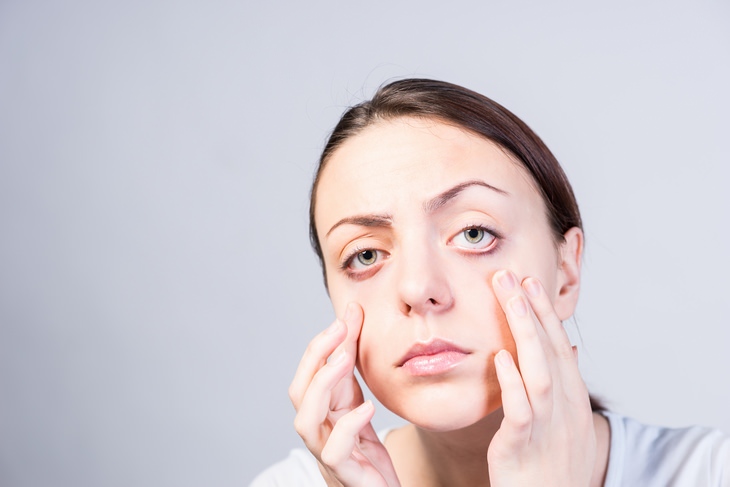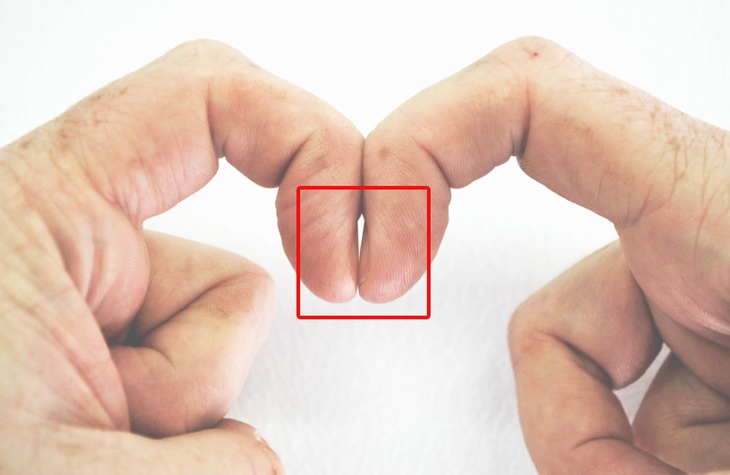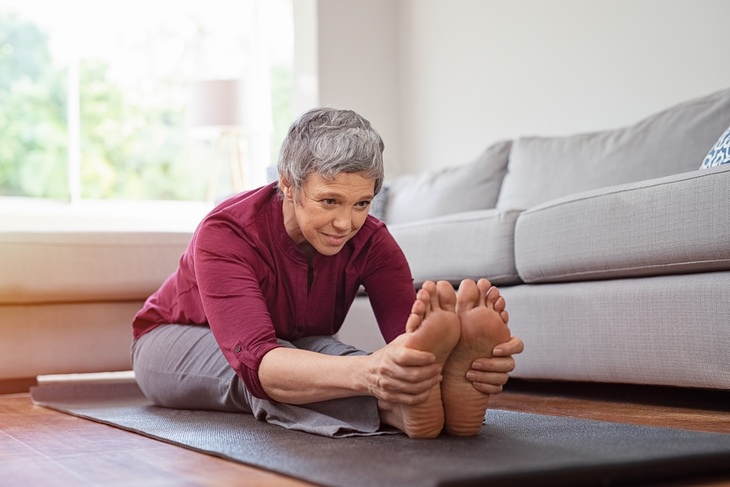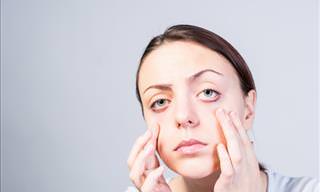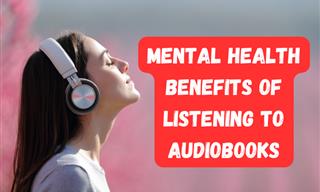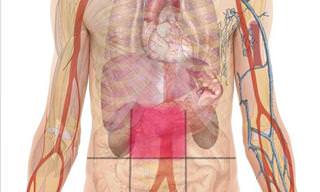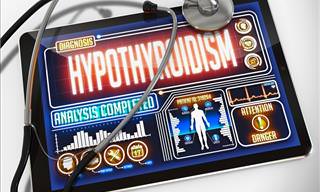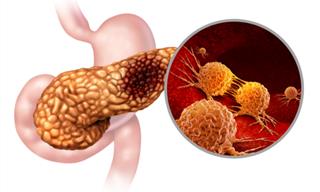1. Anemia.
THE TEST: You need to do this test in front of a mirror. Pull back your lower eyelid and check the color of the inside of the eyelid. If it’s pink, you’re good to go, but if the color is pale or yellowish, it may be a sign of iron deficiency. If you are also very pale and get tired very easily, this may be due to anemia, so it’s best to see your doctor.
2. Poor hearing.
THE TEST: In a quiet room, sit down and rub your right fingers together close to your right ear. You will hear a quiet rubbing sound. Now extend your right hand as far from the ear as you can and repeat. Also, don’t forget to test the left ear as well. Can you hear the sound every time? If so, your hearing is great!
3. Obesity.
It turns out that the best way to know if you’re clinically overweight is by measuring your neck. A 2017 study by the University Hospital Medical School in Sofia determined that a neck measurement over 36 cm for women and 39 cm for men could predict obesity.
THE TEST: Get a measuring tape and determine the circumference of your neck. If it’s below the measurements we mentioned above, you have nothing to fear, but if it’s more than that, you will need further physical examination.

4. Diabetes
Numbness of the feet is an often-ignored early symptom of diabetes, which occurs as a result of nerve damage. To test yourself for foot numbness, you will need a partner and a pencil.
THE TEST: You will need to take off your shoes and close your eyes, while your partner will have to poke your feet with either the sharp or the eraser side of the pencil without telling you.
You will need to identify yourself whether it’s the eraser side or the sharp side. If you can guess, you have nothing to fear. If, however, you couldn’t tell them apart, you need to see a doctor. By the way, the same symptom can occur in persons with lupus and Lyme disease, all of which require professional treatment.
5. Lung and cardiovascular disease.
THE TEST: First, find a set of stairs that has 8-12 steps. Now, while you’re walking upstairs, talk, sing or read something out loud. If at any point of the journey upstairs you feel short of breath and your heart is pounding, it could indicate that your lungs and circulatory system cannot handle the workload, so better get them checked.
6. Hormone imbalance or lack of vitamins.
Humans shed over 50 strands of hair every day and its part of our natural life cycles, but too much hair loss can indicate a health concern.
THE TEST: If you gently rake through your hair or pull on it slightly and more than 3-4 hairs fall out at a time, it might be a suspicious symptom.
Don’t run to the doctor just yet, though, as hair loss is a common symptom of stress. If it persists for a longer period of time, however, consider a trip to a doctor as it may indicate a hormonal imbalance or vitamin deficiency.
7. Heart and lung disease.
THE TEST: This test is called Schamroth's window and it is used to tell whether someone has nail clubbing, a symptom of poor oxygen supply to the extremities due to chronic lung and heart disease. Curl your pointing fingers like on the photo and connect the two fingernails.
Do you see a tiny space in-between the fingers like the one we highlighted in the picture? Great, you’re fine. If, however, there is no such space, it may be a sign of clubbing.
8. Age-related macular degeneration (AMD).
AMD is the leading cause of blindness and poor eyesight for people over 50, so it is important to conduct regular checks for this condition.
THE TEST: To test yourself for AMD, look at a door or window frame from across the room one eye at a time for 30 seconds. If you see a slight bend in the straight frame of the door or window, it may be because of AMD.
9. Dementia

THE TEST: If dementia is a possible concern, consider this test. Draw a clock on a piece of paper, write on all the numbers on the clock and make it show 3:40.
If you drew the clock in a closed circle, you receive 1 point. If you placed the numbers correctly, you receive another point. If you have all twelve numbers on your picture, you receive one more point. Lastly, if the hands show the correct time, you receive the 4th point. For those of your who scored 3 or less, it is a good idea to get screened for dementia.
10. Check your moles
Melanoma is the leading cause of deaths related to skin cancer, so it is important to check your moles regularly.
THE TEST: These are the things you need to keep in mind when monitoring the moles on your body (remember the anagram ABCDE):
1. Asymmetry (dangerous moles are often not the same on both sides).
2. Border (melanomas always have irregular rough edges)
3. Color (if your mole is changing colors, it’s important to get it checked by a doctor).
4. Diameter (a malignant mole is usually larger than 6mm, about the size of a pencil eraser)
5. Evolving (is it growing? If so, it might be a bad tumor).
11. Brain Health

Your sense of balance is an indicator of how healthy your brains are, as proven by a recent Japanese study.
THE TEST: To test your sense of balance, just measure how long you can stand on 1 leg without wobbling. If you start to wobble after just 20 seconds, you could have brain problems such as stroke and dementia in the future.
12. Carpal tunnel syndrome (CTS).
Carpal tunnel syndrome is a very painful condition that affects people who engage in excessive small motoric movements, particularly office workers, artists, and factory workers. It occurs when the nerve that goes from your wrist to your hand gets compressed, which causes excruciating pain.
THE TEST: To check if you are at risk of CTS, lift your hands up with your palms across from your face. Try to reach the mid part of your palm with your fingers as shown in the picture above. People with no risk of CTS should be able to hold this position for 1-2 minutes. If any tingling or pain occurs while you’re doing the test, it’s safest to get your wrists checked by a professional.
13. Problems with the arteries.
THE TEST: Lie down on the floor and place your feet against the wall at about a 45-degree angle and wait for several minutes. Tip: you can use pillows to prop up your legs if it’s difficult to keep them up.
If one or both of your feet rapidly changed color and became much paler, it could indicate a problem with the blood circulation in your extremities. In particular, it could be a sign of peripheral artery disease (PAD), which is dangerous if left untreated as it can lead to stroke and heart attack.

14. Artery health
Researchers at the University of Texas proved that being flexible means so much more than just having healthy muscles and joints. The discovered that people who are flexible have more flexible arteries, which makes blood flow more easily through the blood vessels.
THE TEST: Try this test to determine how flexible you are. Sit down on the floor with your legs extended forward and try to reach your toes with your hands while keeping your lower back straight. If your hands are very far away from your toes, you should start stretching more, otherwise, you’ll be at higher risk of stroke and heart disease.
Finally, we’d like to remind you that the information we provide in this article is for educational purposes and is not enough to diagnose an illness. For an accurate diagnosis, we recommend to consult your healthcare provider.
 Go to BabaMail
Go to BabaMail


